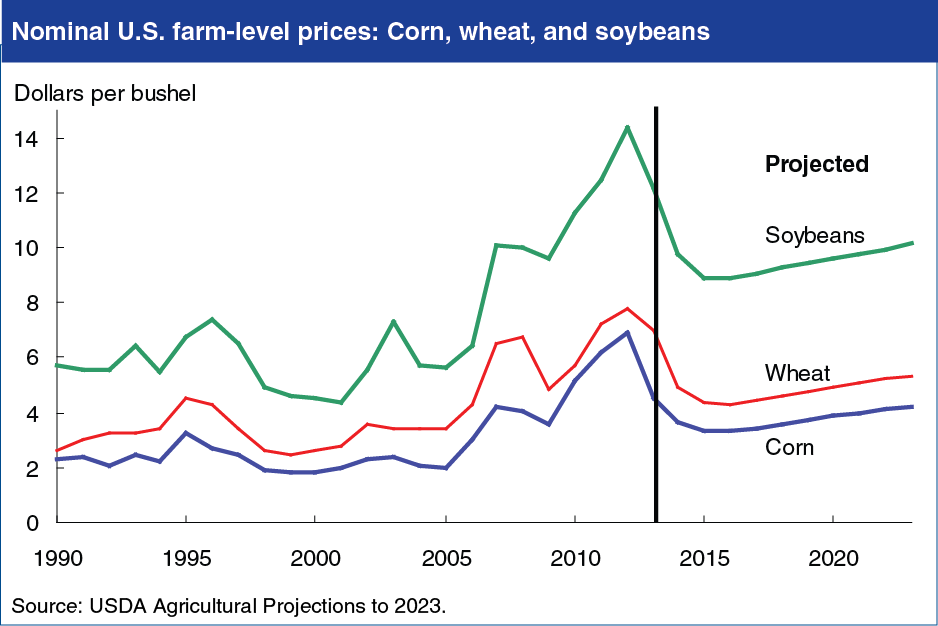High commodity prices improve U.S. farmers’ overall crop receipts and net cash income, which in turn fuels growth in farm machinery. While corn, soybeans and wheat have fallen from their all-time high prices during the past couple of years, longer term they’re expected to increase, which paints a positive picture for ag equipment sales.
Although market responses to high crop prices in recent years, both in the U.S. and abroad, are projected to lower U.S. crop prices over the next couple of years, in the longer term prices for corn, wheat and soybeans are projected to remain high relative to historical prices.
The continuing influence of several long-term factors — including global growth in population and per capital income, a low-valued U.S. dollar, increasing costs for crude petroleum and rising biofuel production — underlies these price projections.
Corn prices are projected to decline through 2015-16, but then begin increasing in 2016-17 as ending stocks tighten due to growth in feed use, exports and demand for corn by ethanol producers. Soybean prices are expected to initially fall from recent highs but then rise moderately after 2015-16, reflecting strengthening demand for soybeans and soybean products. Wheat prices are also projected to fall through 2016-17, in response to rising wheat stocks and falling corn prices, but strengthen in the longer term due to export growth, moderate gains in food use and declining stocks.
Find this chart and additional analysis in USDA Agricultural Projections to 2023.







Post a comment
Report Abusive Comment